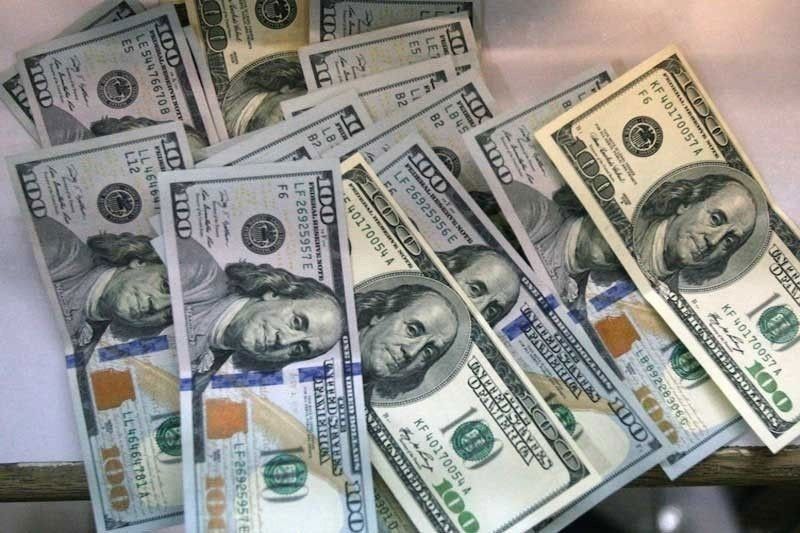BOP surplus hits record-high $16 billion

MANILA, Philippines — The country’s surplus of dollars more than doubled to an all-time high of $16.02 billion last year on the back of higher foreign borrowings by the national government to cushion the impact of the global health crisis, the Bangko Sentral ng Pilipinas (BSP) said.
BSP Governor Benjamin Diokno said the balance of payments (BOP) surplus last year was 104 percent higher than the $7.84 billion recorded in 2019 amid the COVID-19 pandemic.
“Higher net foreign borrowings by the national government and lower merchandise trade deficit, along with sustained net inflows from personal remittances, foreign direct investments, and trade in services accounted for the favorable performance in 2020,” Diokno said.
Last year’s BOP surplus exceeded the previous record of $15.24 billion recorded in 2010. It also surpassed the revised BOP surplus of $12.8 billion or 3.4 percent of gross domestic product (GDP) projection set by the BSP.
The BOP is the difference in total values between payments into and out of the country over a certain period.
A surplus means more foreign exchange flowed into the country from exports, remittances from overseas Filipinos, business process outsourcing earnings and tourism receipts than what flowed out to pay for the importation of more goods, services and capital.
For the month of December alone, the BOP surplus reached $4.25 billion or 2.7 times the $1.57 billion surplus recorded in December 2019.
“The BOP surplus in December 2020 reflected inflows mainly from the BSP’s foreign exchange operations and income from its investments abroad, and national government’s foreign currency deposits with the BSP of proceeds from its issuance of ROP global bonds,” Diokno said.
The BSP chief said the inflows were partly offset by the national government’s payments of its foreign currency debt obligations.
The Philippines slipped into recession with a record gross domestic product (GDP) contraction of 9.5 percent last year, ending 22 years of economic growth as the government imposed the longest and strictest lockdowns in the world to slow the spread of the deadly disease.
Foreign borrowings by the national government approved by the BSP’s Monetary Board soared 82.5 percent to $17.7 billion last year to beef up the country’s war chest against the COVID-19 pandemic.
These included $6.5 billion worth of global bond issuances by the national government, $7.5 billion worth of program loans and $3.7 billion worth of project loans.
Likewise, latest data from the Philippine Statistics Authority (PSA) showed the country’s trade deficit narrowed by 46.3 percent to $21.84 billion last year from $40.67 billion in 2019 due to the impact of the health pandemic on global trade.
Fewer dollars went out of the country to pay for imports that declined by 23.3 percent to $85.61 billion, while exports booked a double-digit decline of 10.1 percent to $63.77 billion.
Michael Ricafort, chief economist at Rizal Commercial Banking Corp., said BOP surpluses could still be sustained at relatively higher levels, after the latest record high, as the inflows in US dollars could still continue in the coming months.
Ricafort added the country’s gross international reserves (GIR) would also reach new record highs after hitting an all-time high of $110.12 billion in end-2019 as the economy reopens and recovers further, supported by the rollout of COVID-19 vaccines.
“Sustained BOP surpluses to fundamentally lead to record high GIR into uncharted highs well above latest new record high of $110.12 billion that have structurally supported the appreciating trend of the peso exchange rate versus the US dollar in recent months,” Ricafort said.
The latest GIR level exceeded the revised $105 billion target set by the central bank for 2020 and is equivalent to 11.8 months worth of imports of goods and payments of services and primary income. The buffer is also about 9.5 times the country’s short-term external debt based on original maturity.
- Latest
- Trending





























